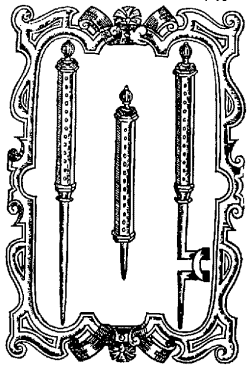Pricking on:
[Wikipedia]
[Google]
[Amazon]

 During the height of the witch trials of the 16th and 17th centuries, common belief held that a
During the height of the witch trials of the 16th and 17th centuries, common belief held that a
 During the height of the witch trials of the 16th and 17th centuries, common belief held that a
During the height of the witch trials of the 16th and 17th centuries, common belief held that a witch
Witchcraft traditionally means the use of magic or supernatural powers to harm others. A practitioner is a witch. In medieval and early modern Europe, where the term originated, accused witches were usually women who were believed to have us ...
could be discovered through the process of pricking their skin with needles, pin
A pin is a device used for fastening objects or material together.
Pin or PIN may also refer to:
Computers and technology
* Personal identification number (PIN), to access a secured system
** PIN pad, a PIN entry device
* PIN, a former Dutch ...
s and bodkins – daggerlike instruments for drawing ribbons through hems or punching holes in cloth.
This practice derived from the belief that all witches and sorcerers bore a witch's mark
A witch's mark or devil's mark was a bodily mark that witch-hunters believed indicated that an individual was a witch, during the height of the witch trials. The beliefs about the mark differ depending on the trial location and the accusation mad ...
that would not feel pain or bleed when pricked. The mark alone was not enough to convict
A convict is "a person found guilty of a crime and sentenced by a court" or "a person serving a sentence in prison". Convicts are often also known as " prisoners" or "inmates" or by the slang term "con", while a common label for former conv ...
a person, but did add to the evidence. Pricking was common practice throughout Europe. Professional witch finders earned a good living from unmasking witches, travelling from town to town to perform their services. Hollow wooden handles and retractable points have been saved from these finders, which would give the appearance of an accused witch's flesh being penetrated to the hilt without mark, blood, or pain. Other specially designed needles have been found with a sharp end and a blunt end. Through sleight of hand, the sharp end could be used on "normal" flesh, drawing blood and causing pain, while the unseen dull end would be used on a supposed witch's mark.
In literature
The pricking of a witch forms significant plot points in John Buchan 1927 novel ''Witch Wood
''Witch Wood'' is a 1927 novel by the Scottish author John Buchan that critics have called his masterpiece. The book is set in the Scottish Borders during the Wars of the Three Kingdoms, and combines the author's interests in landscape, 17t ...
'' and in Robert Neill's 1967 novel ''Witch Bane''.
See also
*Witches' mark
A witch's mark or devil's mark was a bodily mark that witch-hunters believed indicated that an individual was a witch, during the height of the witch trials. The beliefs about the mark differ depending on the trial location and the accusation mad ...
* Witch-hunt
A witch-hunt, or a witch purge, is a search for people who have been labeled witches or a search for evidence of witchcraft. The classical period of witch-hunts in Early Modern Europe and Colonial America took place in the Early Modern per ...
Notes
{{ReflistBibliography
* Brian P. Levack, ''The Witch-Hunt in Early Modern Europe'' (2nd edn., 1995) * Gary K. Waite, ''Heresy, Magic, and Witchcraft in Early Modern Europe'' (2003) * Robert W. Thurston, ''The Witch Hunts: A History of the Witch Persecutions in Europe and North America'', 2nd ed. (2007) * Joseph Klaits, ''Servants of Satan: the Age of the Witch Hunts'' (1985) * Geoffrey R. Quaife, ''Godly Zeal and Furious Rage: the Witch in Early Modern Europe'' (1987) Early Modern witch hunts